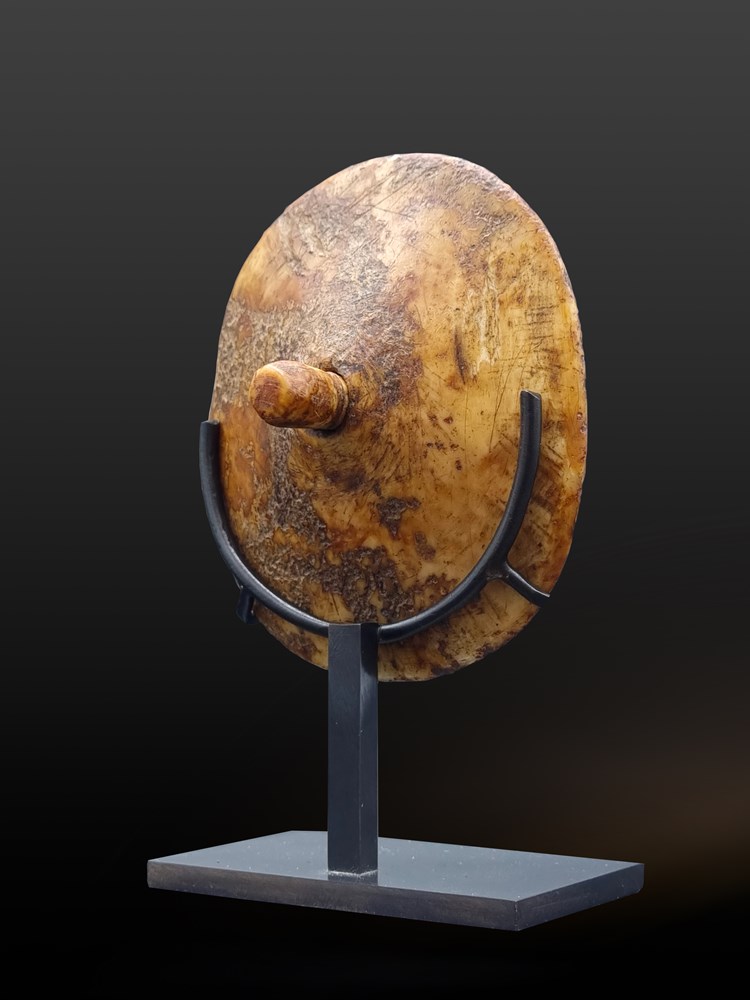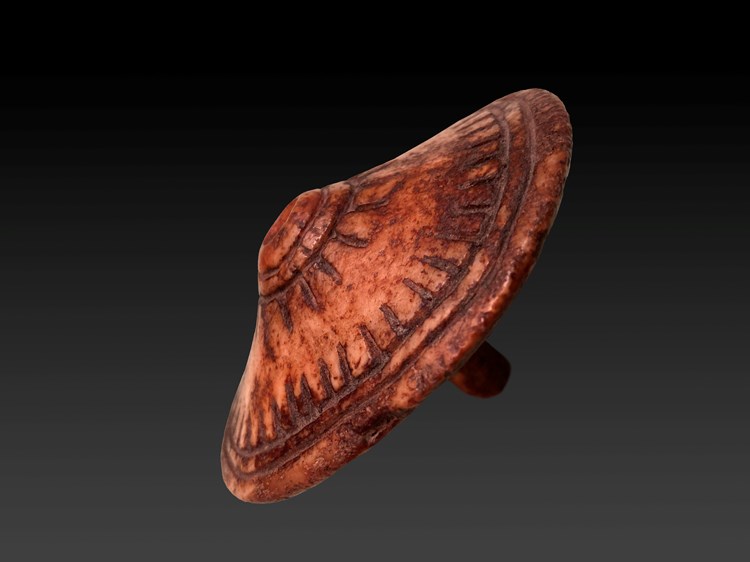PUNUK SPINNING TOP
E 329) A large, heavy and very fine spinning top carved as a thick bi-conical disc decorated on one side with a powerful incised motif of radiant lines in a double circle. The point of the spinning top is missing but the spinning handle is still present on the reverse. Punuk Islands, Bering Strait, Alaska. Punuk Culture 400 to 1000 AD. Mineralized walrus tusk (Odobenus rosmarus divergens) with a superb patina of age and use. 7,8 x 6,5 x 4,5 cm.
Provenance
Ex collection Paul J. Steinhacker.
After serving with the 7th Infantry Division in Korea in 1953, Paul J. Steinhacker was in advertising in New York and California for 16 years and worked on Robert Kennedy’s political advertising in 1964 and 1968. Changing careers in 1968 he owned a gallery of antique Tribal Art in New York for 30 years. This work took him to Alaska yearly for 25 years, where he also had a sideline in gold mining, eventually staking out 1,300 acres of gold claims with a cabin in the bush north of Nome.
Literature:
Spinning tops are a very ancient form of game, past-time and can used as well in magical and religious rituals and practices. Amongst the Eskimo the spinning top is recorded as early as the Punuk culture of the Bering Strait (400-1000 AD) and possibly further back into the OBS era (Old Bering Sea) several hundred years earlier. Dr David Riches reports that in the historical period "...Spinning tops were used in the later Thulé cultures as a gambling game when living in the hunting camps far away from the permanent settlements."
See : Not Working Alone – Games People Play by Dr David Riches in New Scientist, 26 july 1979
See others in the National Museum of the American Indian in Washington D.C. & NY.










